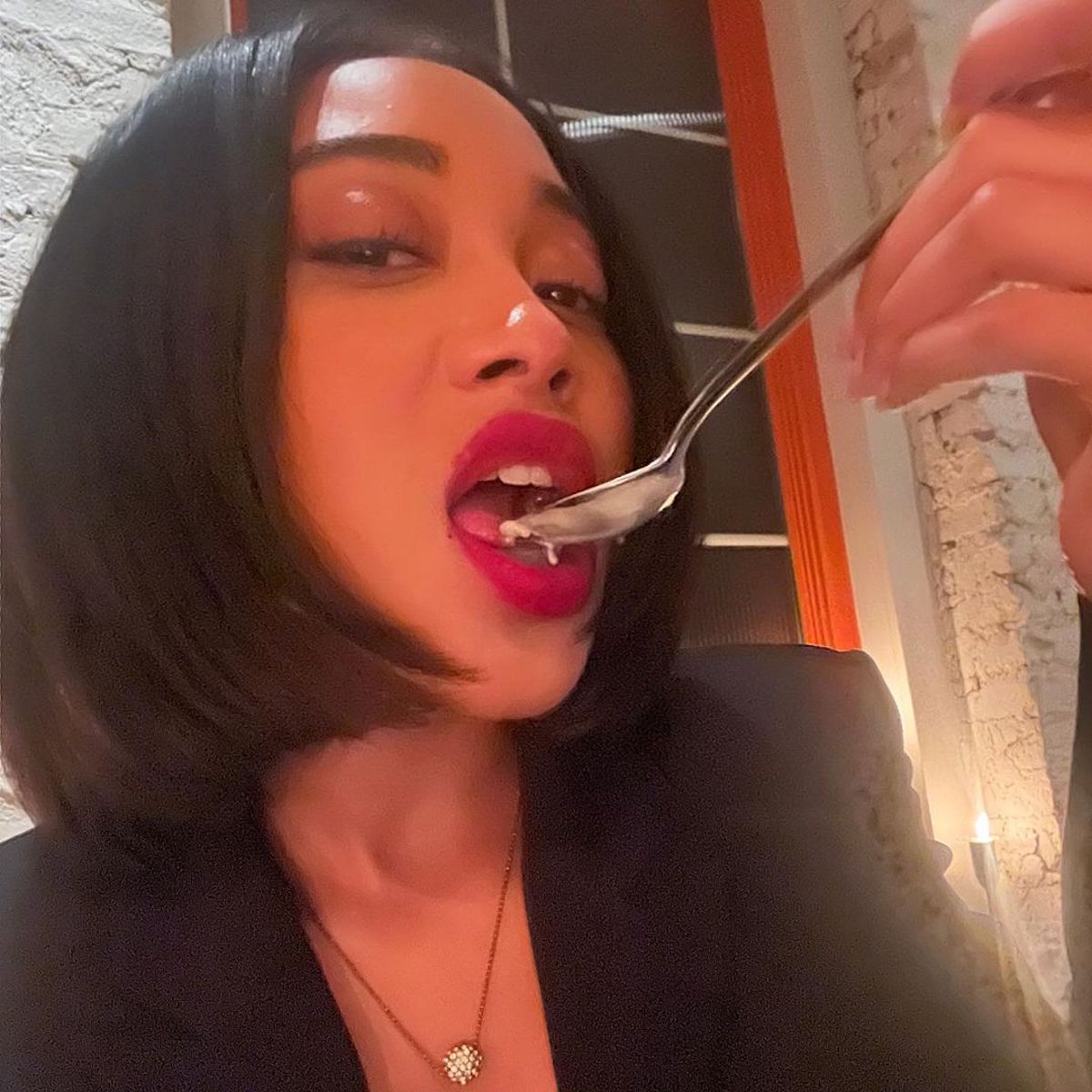I Discovered 5 Secret Ways to Keep Your Teeth Bright—No Whitening Strips Needed

Photo:
@itsheymorganHave you ever heard that saying that goes, "a smile is the best accessory?" Sure, it's one of those mushy, saccharine-sweet sayings that might make you cringe when you hear it, but when it comes down to it, there's some real truth to it. A bright smile is something we all want, and it looks just as good on its own as it does when it's framed by lip liner, lipstick, and lipgloss.
Here's the thing, though: Getting a bright smile is simple. You can use at-home whitening products or go in for professional whitening at the dentist's office. Maintaining a bright smile is more difficult—especially during the holiday season when we're drinking and eating teeth-staining things like coffee, tea, wine, chocolate, etc. It's difficult, but not impossible. Ahead, learn five ways to keep your teeth bright, according to dentists.

Photo:
@morgan_leoneAccording to Rhonda Kalasho, DDS, dentist, and founder of TruGlo Modern Dentistry, and Daniel Rubinshtein, DDS, and celebrity cosmetic dentist, our teeth can become stained at any point, but they're particularly vulnerable to it during the holiday season.
"Wines, festive flavored teas, and holiday coffees are among the most staining," Kalasho says. "Teas are more staining to the teeth than coffee is—believe it or not—because it is a titratable acid and can really penetrate the enamel."
As for Rubinshtein, he adds curry, green juice, and red sauce to the list of top teeth-staining culprits. "Staining is inevitable but we can definitely reduce the amount," he says.

Photo:
@elizabethanneventer1. Reduce the Amount of Teeth-Staining Food and Drinks You Consume
You might consider the first tip to be quite obvious, but it's also quite effective. Simply reduce the amount of teeth-staining food and drinks that you consume. Yes, that means all the good stuff like tea, coffee, and red wine. Rubinshtein says this is the first defense against staining and the easiest way to keep teeth bright, whether you've just whitened them or it's been a while.

Photo:
@borislavasekova2. Rinse Your Mouth With Water After Eating or Drinking
Of course, we can't always avoid tea, coffee, and red wine (nor would we want to… as for us, a daily coffee is nonnegotiable). To prevent staining despite consuming these foods and drinks, Rubinshtein recommends rinsing your mouth with water after you're done. This prevents them from lingering on your teeth and causing long-term stains. He says you can also use an alcohol-free mouthwash if you happen to have one nearby.

Photo:
@lizzyhadfield3. Wait an Hour to Brush Your Teeth After Eating or Drinking
If you think you should brush right after eating and drinking, think again. Rubinshtein says you should actually way about an hour or so. This preserves the enamel and keeps your teeth strong and healthy. Make sure you use a soft-bristle toothbrush (harsh bristles don't clean any better. In fact, they could do more harm than good, so stick with soft bristles).

Photo:
@celmatique4. Eat Something While Drinking Tea, Coffee, and Wine
This one is as unexpected as it is effective. If you're about to drink something that could stain your teeth, like tea, coffee, or wine, add some food to the mix. "Have your drink with some food, like a meal if you are drinking wine, and with a pastry if you are having tea or coffee," Kalasho says. "Chewing and eating actually cleanse the teeth because your salivary flow increases and the food touches all your tooth surfaces. For tea and coffee perhaps try to add some sugar-free creamer; it can help make the drink less acidic and lighten the color."

Photo:
@valerialipovetsky5. Keep Plaque at Bay
This tip isn't just good for keeping your teeth bright, it's also good for your oral health as a whole. "Don’t underestimate the power of a clean mouth," Kalasho says. "Many people use whitening at-home agents like gels or strips, but they have plaque on their teeth. Plaque is a thin filament of bacteria that is yellow in nature and stains with the foods you eat. Your teeth could be filled with gum disease and cavity-causing bacteria and you are simply masking it by whitening. Most of the time if you notice your teeth are not getting whiter, especially at the end closest to the gums it’s because you have a bacterial filament on your teeth that needs to be exfoliated by a dental professional so the whitening actually works."
Make sure you're brushing and flossing twice a day to keep plaque at bay. Regular dental check-ups are necessary, too. And speaking of dentists, both experts say the efficacy of professional whitening can't be overstated. "You can use a more profound whitening system by your dentist, called chair-side teeth whitening," Rubenshtein says. "Also for a more permanent white smile, you can consider conservative porcelain veneers."
8 Essentials to Shop for Bright Teeth
Rubenshtein recommends this toothbrush, because "you get that hygienist clean feeling after you brush your teeth," and it "helps to clean hard-to-reach places."
He also recommends this product, which is a "sponge-like floss that helps absorb more plaque and bacteria between your teeth."
Finally, he recommends this alcohol-free mouthwash that contains essential oils for "optimum oral health."
Kalasho recommends this toothpaste that's proven effective for sensitive teeth whitening.
The same goes for this whitening, alcohol-free mouthwash.
She also recommends this water flosser for keeping gums fresh and healthy.
If you want boost the whiteness of your smile at home, Kalasho recommends these pre-filled whitening trays.
- Explore More:
- beauty
- Teeth Whitening







